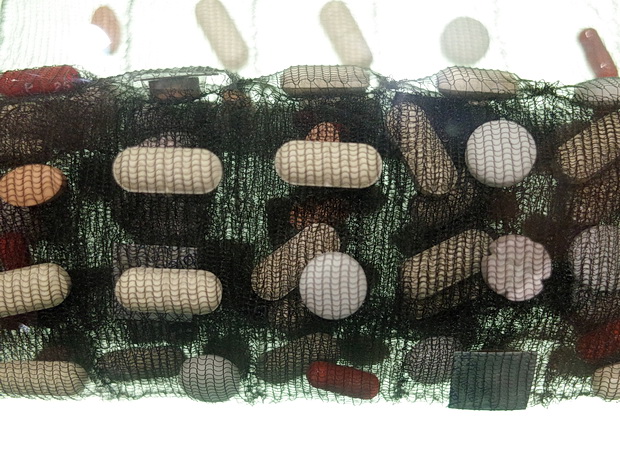
Currently on display in the British Museum is a contemporary art installation called, ‘Cradle to Grave,’ which sets out to explore our approach to health in Britain today.
The work incorporates a lifetime supply of prescribed drugs knitted into two lengths of fabric, illustrating the medical stories of one woman and one man.
Each length contains over 14,000 drugs – which is the estimated average prescribed to every person in Britain in their lifetime.
If you add in the pills we might buy over the counter, the total would rise to an astonishing 40,000 pills each.
The museum website explains more about the work:
Some of the treatments are common to both: each starts at birth with an injection of vitamin K and immunizations, and both take antibiotics and painkillers at various times. Other treatments are more specific. The woman takes contraceptive pills, and hormone replacement therapy in middle age.
The man has asthma and hay fever when young, but enjoys good health until his fifties. He finally stops smoking after a bad chest infection when he is seventy. He is treated for high blood pressure for the last ten years of his life and has a heart attack and dies of a stroke in his seventies. He takes as many pills in the last ten years of his life as in the first sixty-six.
The installation dates from 2003, and was made by Susie Freeman, a textile artist, David Critchley, a video artist, and Dr Liz Lee, who is a GP, who collectively call themselves Pharmacopoeia.
Find out more about the installation here.
British Museum
Great Russell Street
London
WC1B 3DG
Free admission
Open daily 10.00–17.30
Fridays: open until 20.30

